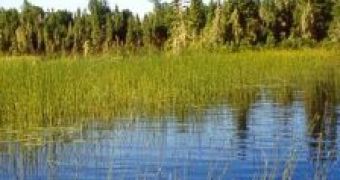Ecologists typically study biodiversity in "snapshots" -- single-time surveys conducted in many locations -- and try to understand why some habitats have more species than others, or why larger areas contain more species than smaller ones. But what are ecologists missing if they ignore the reality that communities are not snapshots but continually in flux?
By studying how plants in three hyper-diverse grasslands change annually over a decade, ecologists Jason Fridley (University of North Carolina, Chapel Hill), Robert Peet (University of North Carolina, Chapel Hill), Eddy van der Maarel (University of Groningen), and Jo Willems (Utrecht University) show how one crucial property of ecosystems -- the species-area curve, describing the relation of area and number of species -- cannot be fully understood unless annual changes in the species composition of local communities are taken into account.
Fridley and colleagues have demonstrated, for the first time, that "local" species-area curves (those confined to one community) and those of large regions can be linked if one considers that the species composition of small areas changes faster than that of larger areas.
"It is increasingly clear," says Fridley, "that plant communities are dynamic entities in which variation in space and time are inextricably linked."
Indeed, ecologists have argued for decades over why species-area curves measured locally do not seem to match predictions derived from larger areas. This study shows that smaller surveys are heavily constrained by the poor sample size of individuals in any given year. Over time, as individuals die and are replaced by others from the surrounding area, the sample size increases and the community begins to resemble more its region -- but in a manner that strictly follows the region's species-area curve.
This novel connection of local and regional biodiversity patterns extends the generality of the species-area relationship to very small areas, and thus allows ecologists to explicitly link processes that drive biodiversity across scales.

 14 DAY TRIAL //
14 DAY TRIAL //